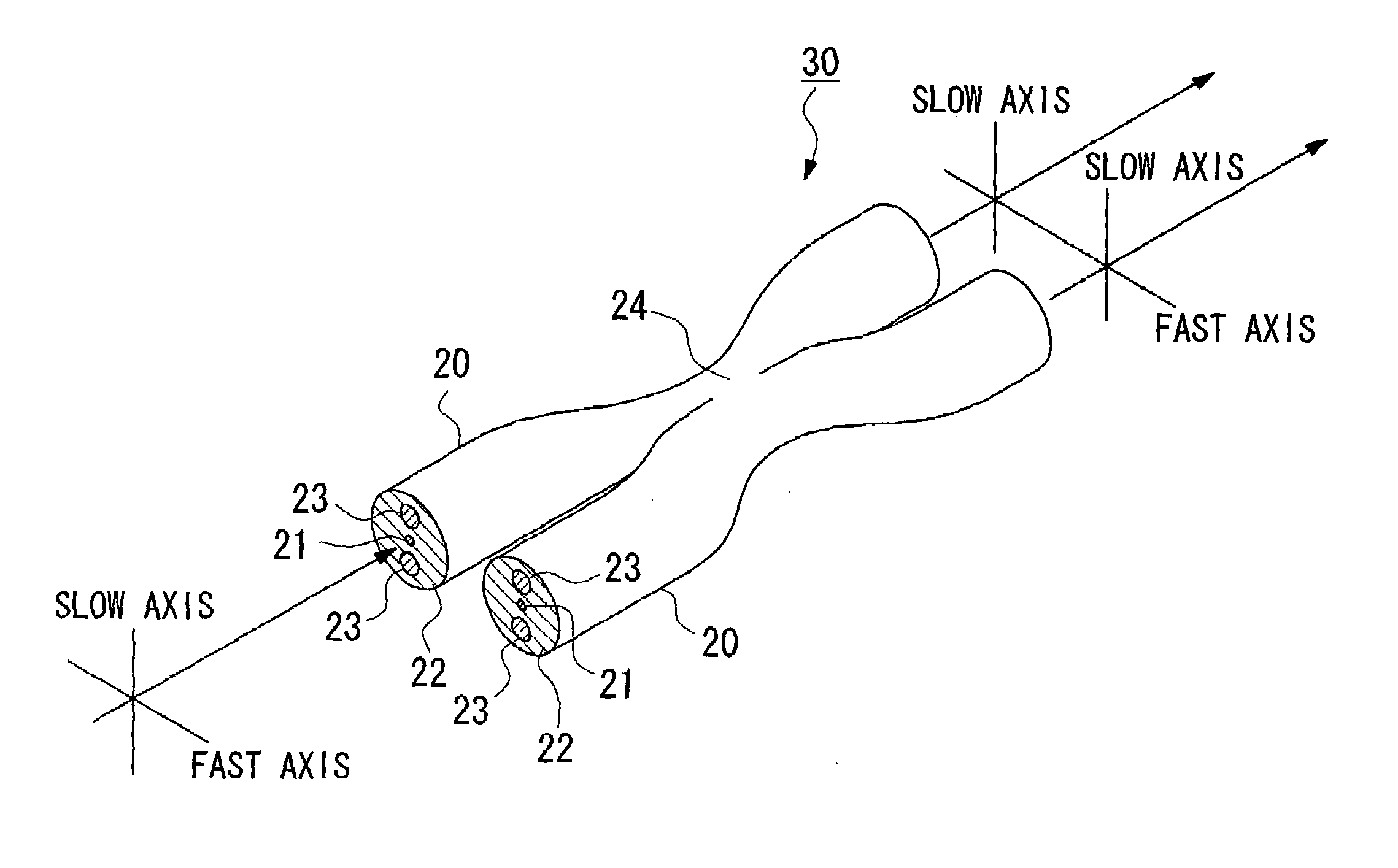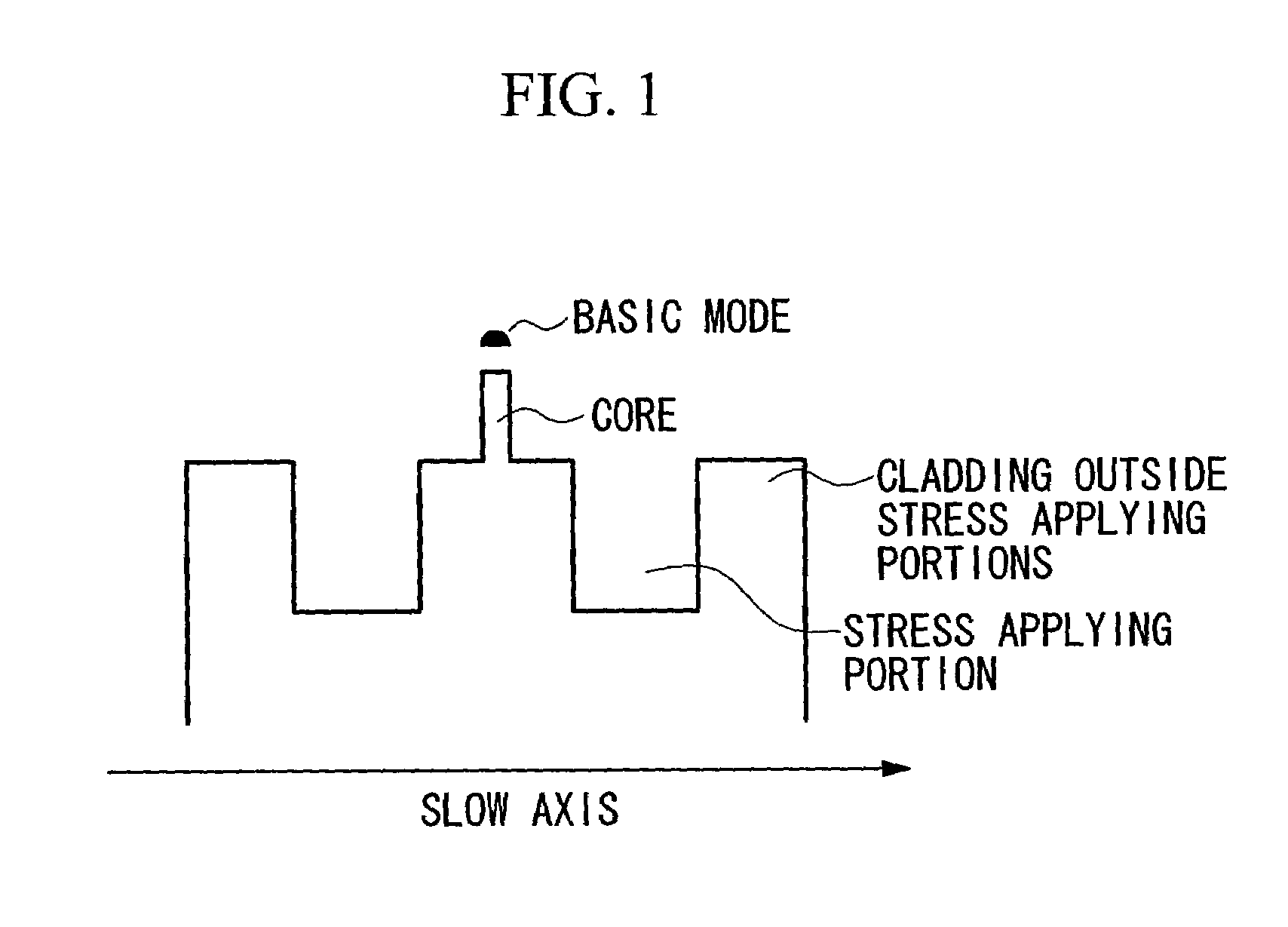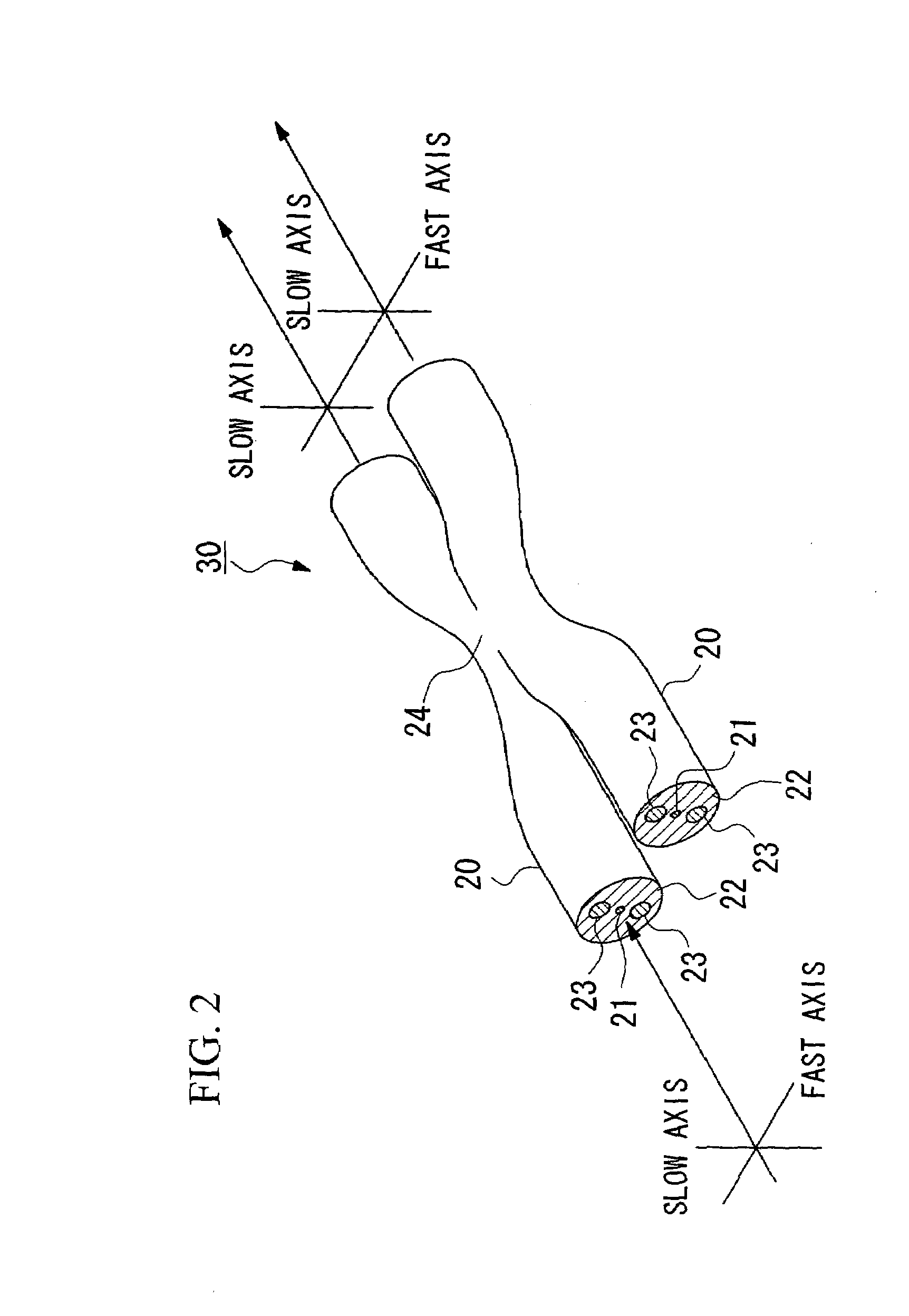Polarization maintaining optical fiber coupler and method of manufacturing same
a technology of polarization maintaining optical fiber and coupler, which is applied in the direction of manufacturing tools, cladded optical fibre, instruments, etc., can solve the problems of wavelength dependence, easy generation of excess loss, and excess loss
- Summary
- Abstract
- Description
- Claims
- Application Information
AI Technical Summary
Benefits of technology
Problems solved by technology
Method used
Image
Examples
example 1
[0077]A PANDA type optical fiber having an outer diameter of approximately 125 μm underwent diameter narrowing processing via an etching method or the like that used hydrofluoric acid. As a result, a PANDA type optical fiber 20, such as that shown in FIG. 5A, was obtained. The outer diameter of this PANDA optical fiber 20 was approximately 95 μm. The outer diameters of two stress applying portions 23 was approximately 36 μm. The distance between adjacent outer circumferences of the two stress applying portions 23 on an axis connecting the centers of the two stress applying portions 23 was approximately 19 μm. The thickness of the cladding 22 on the outer side of the two stress applying portions 23 on an axis connecting the centers of the two stress applying portions 23 was approximately 2 μm.
[0078]According to necessity, a portion of a covering layer formed by plastic or the like provided on the surfaces of two of these PANDA optical fibers 20 was removed. Next, the two PANDA optica...
example 2
[0087]A PANDA type optical fiber having an outer diameter of approximately 125 μm underwent diameter narrowing processing via an etching method or the like that used hydrofluoric acid. As a result, a PANDA type optical fiber 20, such as that shown in FIG. 9A, was obtained. The outer diameter of this PANDA optical fiber 20 was approximately 105 μm. The outer diameters of two stress applying portions 23 were approximately 36 μm. The distance between adjacent outer circumferences of the two stress applying portions 23 on an axis connecting the centers of the two stress applying portions 23 was approximately 30 μm. The thickness of the cladding 22 on the outer side of the two stress applying portions 23 on an axis connecting the centers of the two stress applying portions 23 was approximately 2 μm.
[0088]According to necessity, a portion of a covering layer formed by plastic or the like provided on the surfaces of two of these PANDA optical fibers 20 was removed. Next, the two PANDA opti...
example 3
[0098]A PANDA type optical fiber having an outer diameter of approximately 125 μm underwent diameter narrowing processing via an etching method or the like that used hydrofluoric acid. As a result, a PANDA type optical fiber 20, such as that shown in FIG. 9A, was obtained. The outer diameter of this PANDA optical fiber 20 was approximately 105 μm. The outer diameters of two stress applying portions 23 was approximately 36 μm. The distance between adjacent outer circumferences of the two stress applying portions 23 on an axis connecting the centers of the two stress applying portions 23 was approximately 30 μm. The thickness of the cladding 22 on the outer side of the two stress applying portions 23 on an axis connecting the centers of the two stress applying portions 23 was approximately 2 μm.
[0099]According to necessity, a portion of a covering layer formed by plastic or the like provided on the surfaces of two of these PANDA optical fibers 20 was removed. Next, the two PANDA optic...
PUM
| Property | Measurement | Unit |
|---|---|---|
| thickness | aaaaa | aaaaa |
| thickness | aaaaa | aaaaa |
| distance | aaaaa | aaaaa |
Abstract
Description
Claims
Application Information
 Login to View More
Login to View More - R&D
- Intellectual Property
- Life Sciences
- Materials
- Tech Scout
- Unparalleled Data Quality
- Higher Quality Content
- 60% Fewer Hallucinations
Browse by: Latest US Patents, China's latest patents, Technical Efficacy Thesaurus, Application Domain, Technology Topic, Popular Technical Reports.
© 2025 PatSnap. All rights reserved.Legal|Privacy policy|Modern Slavery Act Transparency Statement|Sitemap|About US| Contact US: help@patsnap.com



